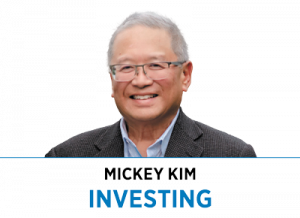Subscriber Benefit
As a subscriber you can listen to articles at work, in the car, or while you work out. Subscribe Now Geoffrey Lincoln Holt was born in 1941 in Indianapolis and passed away in June at 82. By all accounts, Holt lived an unremarkable and anonymous life. A dyslexic, he graduated from Marlboro College in Vermont in 1963 and joined the Navy. After serving his country, he earned a master’s degree from American International College in Massachusetts and briefly taught high school social studies and drivers’ education.
Geoffrey Lincoln Holt was born in 1941 in Indianapolis and passed away in June at 82. By all accounts, Holt lived an unremarkable and anonymous life. A dyslexic, he graduated from Marlboro College in Vermont in 1963 and joined the Navy. After serving his country, he earned a master’s degree from American International College in Massachusetts and briefly taught high school social studies and drivers’ education.
Holt subsequently worked as a production supervisor at a grain mill, retiring when the mill closed. He spent his last decades as the part-time groundskeeper at the Stearns Mobile Home Park, his cherished home.
Holt died with a secret known only to his closest friend and employer, Edwin “Smoky” Smith: He was a multimillionaire and had decided to leave all his wealth—$3.8 million—“to support projects, programs and organizations that provide health, educational, recreational or cultural benefits” to the residents of his adopted hometown of Hinsdale, New Hampshire.
I’m always amazed and awed to read about “salt-of-the-earth” people like Holt who are of modest means but still manage to amass multimillion-dollar estates.
Sylvia Bloom toiled as a legal secretary for the same New York firm for 67 years until she retired at age 96 and died shortly after in 2016. Bloom’s parents were immigrants, and she grew up in Brooklyn during the Great Depression. Bloom had no children and lived modestly in a rent-controlled apartment.
Even to those closest to her, Bloom lived a full but nondescript life. Imagine the surprise her niece, who was executor of her estate, felt when she discovered Bloom had accumulated more than $9 million during her life.
About $6.24 million of Bloom’s money went to the Henry Street Settlement, the largest individual gift in the social service organization’s 125-year history. An additional $2 million was split between Hunter College, where she completed her degree at night, and another scholarship fund.
“She was a child of the Depression, and she knew what it was like to not have money,” said her niece. Further, “she had a great empathy for other people who were needy and wanted everybody to have a fair shake.”
What was Holt’s and Bloom’s “secret” for accumulating massive wealth? Surely that can’t be possible without winning the lottery, finding the next Apple, trading Bitcoin or engaging in some sort of financial wizardry.
Their “secret” is hiding in plain sight. Both saved/invested as much as they could, as soon as they could, and let the “miracle of compound interest” do the heavy lifting. They lived frugally and never felt the need to flaunt their wealth.
Holt invested the severance he received when the grain mill closed in the mid-1980s. When Bloom started as a secretary in 1947, secretaries ran their boss’s life, including tending to his personal investments. When her boss bought a stock, Bloom would buy a much smaller position for herself.
Albert Einstein wasn’t an investment guru but understood the key mathematical concept driving investment returns. He referred to compound interest as “the most powerful force in the universe.” Under the related “Rule of 72,” simply divide 72 by your assumed rate of return to determine the number of years it takes to double your investment. At 6%, it takes 12 years. At 12%, it takes six years.
Assume you buy a $5,000 portfolio at age 20 (and never add a penny) and realize a 12% average annual return. By 26, you would have $10,000; $20,000 by 32; $40,000 by 38; $80,000 by 44; $160,000 by 50; $320,000 by 56; $640,000 by 62; $1.28 million by 68; $2.56 million by 74; and by the time you’re 80, that initial $5,000 investment would be worth a whopping $5.12 million.
According to Crandall-Pierce, the average annual return for the S&P 500 for rolling one-year periods going back to 1950 was 12.5%. However, the actual annual return was seldom close to 12.5% and ranged from -43.3% to 61.2%. That’s right, to average 12.5%, you had to endure -43.3% (without getting scared out of stocks).
Regarding the example of Einstein’s “miracle,” while the first 12 years might seem boring, the last 12 are positively exhilarating. Everyone wants to go directly to the last 12 years. Unfortunately, that’s not how successful long-term investing works.
In short, Holt and Bloom lived blissfully free of the shackles of caring how others around them lived or what others thought about how they lived. Smith said of his best friend, “He seemed to have what he wanted, but he didn’t want much.”
Financial success isn’t so much about having a lot; it’s more about not needing a lot.
Selfless to the end, both “secret multimillionaires” wanted others to benefit from their accumulated wealth.
Holt approached the New Hampshire Charitable Foundation with his wishes more than 20 years ago. The New York Times quoted Melinda Mosier, vice president of donor engagement, who said, “The unique part is that he kept it quiet. He was very unassuming. He just wanted to give back in a way that was truly about making the community better without any fanfare or recognition on his part.”
What a beautiful thought during this holiday season.•
__________
Kim is Kirr Marbach & Co.’s chief operating officer and chief compliance officer. He can be reached at 812-376-9444 or mickey@kirrmar.com.
Please enable JavaScript to view this content.
